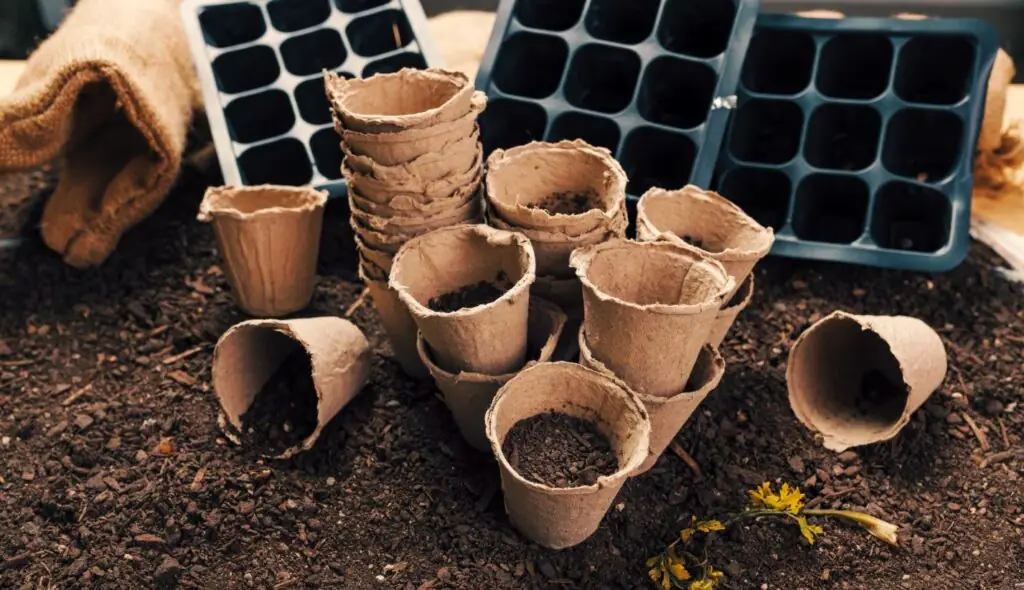Concern over environmental impact has turned attention to the materials we use every day. Biodegradable products offer an alternative that supports waste reduction and better use of resources. This guide explains their key role in the circular economy and how their use can help create a cleaner environment.
Introduction to the Concept of Biodegradability
Biodegradability refers to a material’s ability to break down naturally through the action of microorganisms such as bacteria, fungi, or algae, turning into simple components that reintegrate into nature without leaving toxic residues. A biodegradable product breaks down into water, carbon dioxide, and biomass within a reasonable timeframe depending on environmental conditions.
Characteristics of Biodegradable Products
- Do not leave behind persistent pollutants when decomposing.
- Typically made from natural or organic materials.
- The decomposition process varies depending on environment, temperature, and microbial presence.
- Help reduce the build-up of solid waste in landfills.
Difference Between Biodegradable and Compostable
Although closely related, the two terms are not the same. A biodegradable material simply breaks down through biological processes, but this can occur under different conditions and over varying timeframes. In contrast, a compostable product is not only biodegradable but also:
- Turns into compost (natural fertiliser) after decomposition.
- Must meet specific temperature, humidity, and time conditions to ensure the production of safe compost.
- European standard EN 13432 clearly defines what qualifies as compostable, requiring that decomposition occurs within 90 days in industrial composting conditions and that the resulting compost is non-toxic.
Thus, the key difference is that while all compostable materials are biodegradable, not all biodegradable products are compostable.
Why Biodegradability Matters
In the current context of climate crisis and growing plastic waste, biodegradability has become a crucial criterion in the design and selection of products. Choosing biodegradable materials allows us to:
- Reduce the volume of persistent waste in the environment.
- Facilitate the reintegration of resources into the natural cycle, supporting the circular economy.
- Minimise environmental impact and the ecological footprint of daily and business activities.
Understanding the meaning of “biodegradable” is essential to promoting more responsible and sustainable consumption, leading to positive changes in both society and production models.
Understanding Biodegradable Products
Biodegradable products are those that, once discarded, can be broken down by microorganisms into natural substances like water, carbon dioxide, and biomass, without leaving harmful residues in the environment. For a product to be genuinely biodegradable, this transformation should occur within a reasonable timeframe under natural environmental conditions, without requiring complex chemical or technological interventions.
What Products Are Considered Biodegradable?
Generally, biodegradable products are those made primarily from natural or organic materials. Common raw materials include:
- Uncoated paper and cardboard, free from synthetic additives.
- Wood and plant fibres such as bamboo, jute, or hemp.
- Cotton and other natural fabrics without persistent chemical treatments.
- Corn starch, sugarcane, potato starch, or bioplastics derived from renewable resources.
- Food waste and certain specially designed packaging that decomposes easily.
Conversely, products made from a mix of conventional and organic plastics, or containing additives that delay decomposition, may not meet effective biodegradability criteria.
Examples and Key Characteristics of Biodegradable Materials
The variety of biodegradable materials is broad, covering everyday items as well as specialised packaging for industry and hospitality:
- Biodegradable plastics: made from natural sources like PLA (polylactic acid), PBAT, or biopolyesters, these can break down under specific industrial or home composting conditions.
- Tableware made from corn starch or sugarcane: used in the food sector, these degrade much faster than traditional alternatives.
- Compostable bags and films: alternatives to standard plastic bags, designed to fully and rapidly decompose in composting environments.
- Recycled cardboard and paper: used in packaging, these can easily re-enter the natural cycle after their useful life.
Key characteristics:
- Decompose in under 6 months in optimal conditions, compared to decades for conventional plastics.
- Do not produce microplastics or toxic substances during breakdown.
- Help close the material loop within the circular economy.
Choosing biodegradable products reduces environmental impact and supports the shift toward a society that manages resources more responsibly.
Benefits of Biodegradable Products in the Circular Economy
Introducing biodegradable products into the circular economy marks a significant improvement over traditional linear models of production and consumption. The aim is to close the resource loop and reduce waste accumulation that harms the environment.
Contribution to the Circular Economy
- Reduction of persistent waste: Biodegradable products decompose into natural elements, simplifying waste management and reducing the volume sent to landfills or incinerators.
- Support for resource regeneration: Materials that reintegrate as biomass, water, or CO₂ add renewed value to natural ecosystems and agricultural soils, enabling new production cycles.
- Lower dependence on fossil resources: Made from renewable or organic materials, biodegradable products reduce reliance on petroleum and the emission of greenhouse gases.
Advantages for Sustainable Businesses
- Regulatory compliance and foresight: Using biodegradable products helps companies meet evolving legal requirements on plastic and waste reduction, demonstrating environmental responsibility.
- Enhanced brand image: Choosing biodegradable packaging or tools signals a commitment to sustainability, a quality increasingly valued by customers and partners.
- Access to new markets and opportunities: The demand for responsible products opens doors to emerging market segments, public contracts, and collaborations centred on resource circularity.
- Innovation and differentiation: Investing in materials and processes that meet biodegradability standards drives ongoing improvement and positions businesses as leaders in eco-design and environmental responsibility.
Adopting biodegradable products is a crucial step in transitioning to a circular economy, delivering economic, social, and environmental value to companies and communities.

Why Buy Biodegradable Products?
The decision to use biodegradable products is driven by a combination of practical and ethical reasons, relevant to both consumers and businesses. These motivations centre on sustainability, positive impact, and the improvement of public and corporate perception.
Sustainability as a Purchase Driver
Sustainability has become a key factor in buying decisions. Consumers and institutions are clearly inclined to choose alternatives that:
- Reduce environmental footprint.
- Help preserve natural resources.
- Align with the natural life cycles of the environment.
By choosing biodegradable products, we prioritise environmental respect and encourage more responsible consumption.
Positive Impact for Individuals and Businesses
The use of biodegradable products delivers tangible benefits on both personal and collective levels:
- Active contribution to reducing persistent waste and pollution.
- A clear sense of participating in the solution to the environmental crisis.
- Businesses adopting biodegradability differentiate themselves, qualify for eco-certifications, and meet environmental expectations of customers and suppliers.
Moreover, employees tend to feel more aligned with companies showing environmental sensitivity, which can boost internal motivation and engagement.
Improving Business Image
Implementing environmentally friendly products enhances a company’s reputation and boosts brand value. The benefits include:
- Perception as an innovative, future-ready business aligned with current market expectations.
- Increased trust and loyalty from consumers seeking brands with sustainable values.
- Eligibility for tenders and collaborations limited to environmentally responsible companies.
In a market where purchasing decisions increasingly factor in ecological impact, adopting eco-friendly packaging is key to standing out and evolving towards a more sustainable business model.
Considerations and Challenges in Implementing Biodegradable Products
Transitioning to biodegradable products requires careful consideration of practical aspects such as costs, supplier selection, and perceived quality and durability. Addressing these challenges supports effective integration into operations and business strategies.
Costs and Suppliers: How to Overcome Obstacles
- Higher initial cost: Biodegradable products often cost more upfront than conventional alternatives, due to less common manufacturing processes and materials. However, costs tend to decrease as demand and production technologies improve.
- Selecting reliable suppliers: It’s crucial to choose suppliers that offer valid certifications for biodegradability and compostability, and comply with EU standards like EN 13432 to ensure ecological and legal credibility.
- Lifecycle optimisation: Though purchase prices may be higher, reduced waste management fees and improved brand image can help offset the initial investment.
Quality, Durability, and Common Myths
- Adequate performance: Some doubt whether biodegradable products match traditional plastics in strength and durability. Today, many products are designed to meet functional requirements in food use, packaging, and more.
- Environmental limitations: Biodegradability depends on decomposition conditions. In very dry or cold settings, breakdown may slow — this is normal and doesn’t affect product quality during typical use.
- Debunking myths: Not all biodegradable products are fragile or low quality. Many meet necessary durability standards and may even offer advantages like reduced weight or absence of toxins.
Successful integration depends on comparing options, understanding the materials involved, and demanding transparency from suppliers. This enables a sustainable transition without compromising performance or user experience.
Tangible Benefits of Using Biodegradable Plates
Biodegradable plates offer immediate, practical advantages over conventional plastic or unsustainable options. These benefits impact not only the environment but also user experience and waste handling.
Advantages Over Non-Sustainable Alternatives
- Reduction of persistent waste: Unlike conventional plastic plates, which can take centuries to degrade, biodegradable plates break down quickly under appropriate environmental conditions, producing harmless compounds.
- Lower environmental impact: Manufacturing typically uses less energy and emits less CO₂, as these plates are often made from renewable resources like corn starch, sugarcane bagasse, or plant fibres.
- Free of toxic substances: During decomposition, they do not release microplastics or harmful substances into the environment, soil, or water systems.
- Compliance with event and hospitality regulations: They support adherence to laws restricting single-use plastics and show clear environmental commitment from organisers and businesses.
Quick Results and Immediate Benefits
- Easy post-use disposal: Biodegradable plates can be discarded with organic waste, facilitating composting and simplifying waste collection and treatment logistics.
- Enhanced public image and customer experience: Their use at events, cafés, or restaurants is seen as a responsible choice, improving perception among guests and clients.
- Suitability for eco-conscious events: Ideal for organisations and individuals aiming to minimise the impact of celebrations, catering services, or takeaways.
In short, choosing biodegradable plates is a straightforward, effective way to support the circular economy while demonstrating ecological responsibility — with visible benefits from the first use.
Next Steps Towards Sustainability
Adopting biodegradable products is a concrete step towards cleaner environments and more sustainable economic systems. Their impact goes beyond reducing waste: they promote the circular economy, lower the ecological footprint, and align businesses and consumers with social and legal demands focused on environmental responsibility.
Everyday decisions — like using biodegradable tableware at events, in hospitality, or in food businesses — can yield immediate results in waste management and brand perception. Scaled across communities, these small changes contribute to transforming consumption and production models.
Concrete actions to move forward:
- Prioritise purchasing certified biodegradable and compostable products.
- Learn about product certifications and labelling to ensure genuine positive impact.
- Consider integrating sustainable solutions into your daily life or business operations.
- Play an active role in the shift by promoting good practices and sharing knowledge in your network.
Want to make a simple and visible contribution? Discover our Biodegradable Plates service and take the first step to make your event or business part of the ecological transition. Act today and join the environmental commitment.

